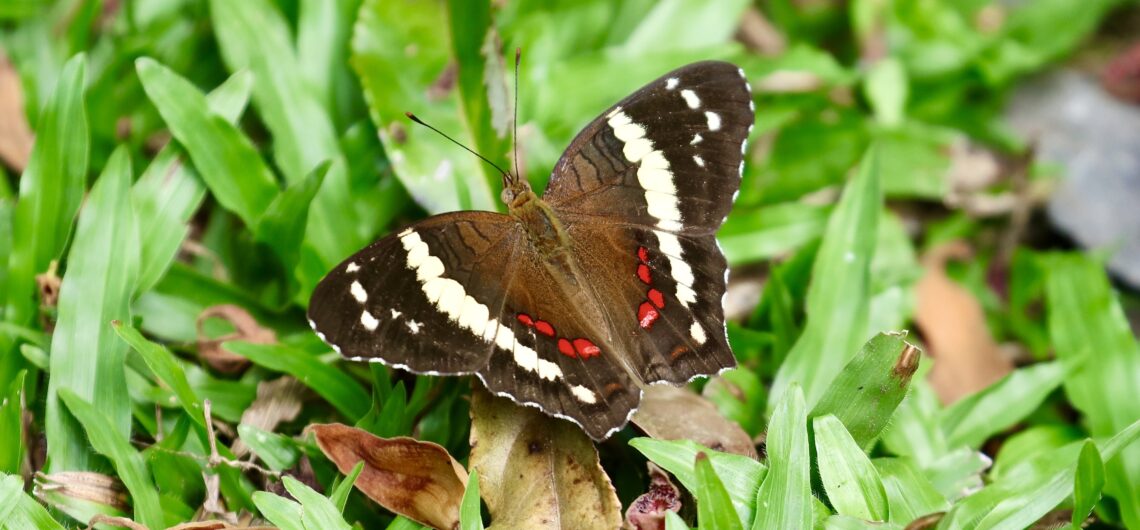Banded Peacock
Anartia fatima
The Banded Peacock is among Panama’s most abundant butterflies. It is brown above with a bold cream-white to yellow band across each wing as well as smaller red patches on its hindwings. Its hindwing margins are undulated and feature a “bumplike” tail. The larva (i.e., caterpillar) of this species has a black body with reddish-brown spines and spots.
Banded Peacocks are active year-round—although the lifespan of an individual adult is only two weeks! Both males and females are diurnal. Caterpillars feed on host plants from the family Acanthaceae, including the genera Blechum, Justicia, Dicliptera, and Ruellia, while adults feed on flower nectar. Males perch on low vegetation and spend much time and energy chasing after females and other males. Females oviposit eggs individually on host plants, most frequently at midday.
There is a lot of individual variation in Banded Peacocks; in particular, its eponymous bands can vary in color from yellow to cream to white. Part of this variation is due to age differences, but part is due to genetic causes and is subject to natural and sexual selection.
Banded Peacocks are common in subtropical and tropical open habitats—fields, orchards, second growth, and disturbed areas—from sea level to 1500 meters. They are widespread throughout Central America from Mexico to Panama, even extending on occasion into south Texas. This is the most commonly encountered butterfly at all three of the Canopy Family lodges.

